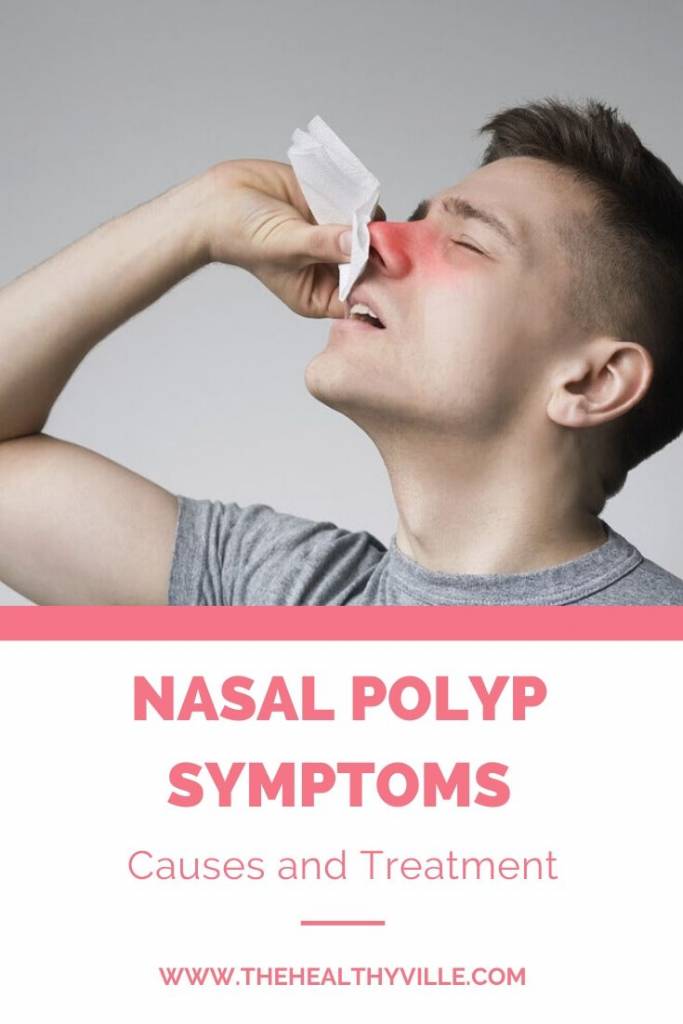The nasal polyp symptoms can be mild or severe. You need to notice them on time, since they may not be as harmless as you would imagine. See why.
Polyps in the nose, unlike polyps in other areas of the body, rarely represent a serious health problem. Only in a few cases are they related to cancer, which is verified by a biopsy. In the other cases they are benign lesions.
Polyps in the nose are soft masses, similar to small sacs that grow in the lining of the nose or in the sinuses. This condition occurs most often in adults and only very rarely in children under 10 years.
It is estimated that polyps in the nose appear in a segment between 1 and 5% of the population. They affect men and women more or less equally, although their incidence is slightly higher in men. The most common is that they occur in people between 30 and 40 years.
This disease is considered as a variant of sinusitis, more exactly of polypoid sinusitis. The size of polyps in the nose is very varied: they can be very small or reach a large volume. In some cases they do not cause major problems, but in others they generate obstruction of the nasal airway.
What are polyps in the nose?
Nasal polyps appear inside the nostrils and, in general, are considered benign lesions.
Polyps in the nose are whitish-looking formations, soft texture and often tear-shaped. Its appearance is similar to that of a seedless peeled grape. They appear inside the nostrils or sinuses. They can be unique or multiple.
Nasal polyps are considered benign lesions. Unlike polyps that appear in the bladder or colon, nose polyps are not tumors and pose a minimal risk of cancer. Usually, they are due to chronic inflammation and are often related to asthma, immune disorders, allergies, etc.
These formations appear when the natural mucosa that is present in the nostrils or sinuses is hypertrophied. In those cases, the mucosa grows and is filled with a thick liquid. Gradually that accumulation is taking shape and configures the polyps. This condition is called nasal polyposis.
Causes
There is some controversy as to the causes of nasal polyposis. Traditionally it has been accepted that this process is related to some type of allergy, but there are also cases in which this condition is not present. Nor is the evolution of this disease completely understood.
There are data that indicate that the chemical markers of the mucous membranes, as well as the responses of the immune system are different in those who develop polyps in the nose and in those who do not occur. This suggests that some genetic mutations may be involved in this problem.
In any case, it has been possible to establish a list of the conditions that operate as risk factors for this disease. That list includes:
- Asthma.
- Allergic fungal sinusitis.
- Cystic fibrosis.
- Aspirin sensitivity.
- Vitamin D deficiency.
- Churg-Strauss syndrome (eosinophilic granulomatosis with polyangiitis).
In some cases, polyps appear during some infectious process in the nose and then disappear, when the infection subsides. They also form when there is a foreign body lodged in the nose.
Nasal polyp symptoms
In many cases, no nasal polyp symptoms appear. However, if they increase in size, they can obstruct the nasal airway.
When the polyps are small, they usually do not give rise to any symptoms and that is why they tend to go unnoticed. If they begin to increase in size then they become noticeable and may cause discomfort or become a source of obstruction of the nasal airway.
It is common for large polyps to cause sinus infection, which becomes a common symptom of polyposis. It is also usual that there is nasal congestion, some degree of loss of sense of smell and taste, as well as rhinorrhea, headache, pain in the area and signs of a cold.
In some cases, those who have nasal polyps are forced to breathe through their mouths. This is because the nasal passage is obstructed, to a greater or lesser extent. There are times when the polyp comes to be present in the nostrils.
Treatment
The most effective measure to treat nasal polyps is extractive surgery. However, the most common is that before this another series of measures are taken to cure them, especially if they do not have an excessive size.
The most common is that the treatment is started with the administration of corticosteroids, by means of mists in the nostrils or through the oral route. Corticosteroids usually produce side effects, so strict monitoring is required.
It is also common for antihistamines and antibiotics to be used. If the polyp is very large and causes some degree of obstruction, it is advisable to perform surgery. However, it has been shown that polyps can be re-formed after this procedure.
Don’t forget to SHARE the nasal polyp symptoms with your friends and family on your social networks!

